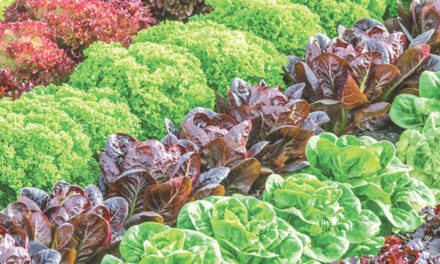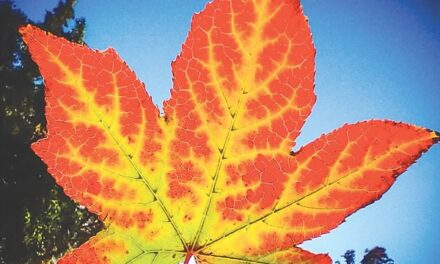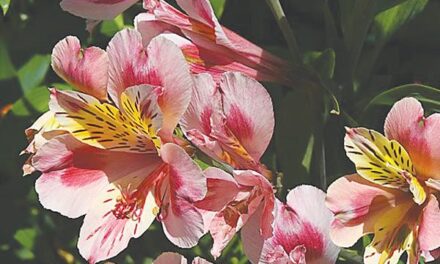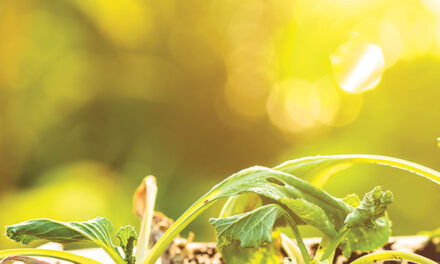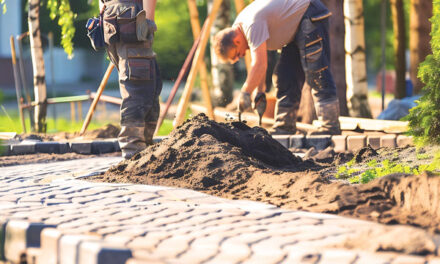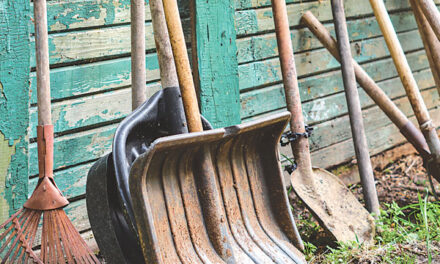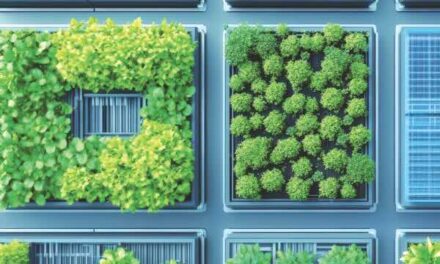Growing plants is an endless cycle of discovery. Somewhat less impactful than the discoveries of DNA and the wheel, I stumbled upon home-grown lettuce.
Although I’ve grown many edible crops, lettuce received scant thought. It seemed more convenient to buy it at the grocery store. You know, squeeze a head of plastic-wrapped iceberg and drop it in the shopping cart.
Then I planted six varieties of lettuce, most of them donated for a community garden fundraising event. I held back several starts of each variety for home use.

Every head was devoured. This made me wonder why I ignored lettuce in the home garden.
Lettuce is crunchy good. It satisfies the hunger for fresh produce when not much else is going on in the garden. Layer it on sandwiches for a crispy snap of sweetness. Toss it with tangy vinaigrette or roll it as a wrap stuffed with anything that tickles the taste buds.
Disrespected as “rabbit food,” lettuce and other greens have nutritional benefits and distinct flavors to enhance food partners. Lettuce is low in calories and high in fiber and water. It’s 95% water, a perfect weight-loss aid. Lettuce contains several essential vitamins and minerals, beneficial to humans and rabbits. Herbivores have discerning tastes.
As summer vegetables fade into chilly fall days, lettuce is an option for raised beds, containers and in ground gardens. It grows best in the fall and late winter/early spring and enjoys Sacramento’s cooler months.
Most varieties are susceptible to hot temperatures that may cause bolting and bitterness. When lettuce bolts, it shifts from leaf production to flowering and seed production before dying.
“There is no better feeling than heading out to the garden and picking your own salad for dinner,” Sacramento gardener and author Pam Farley (aka “Brown Thumb Mama”) wrote in her book, “Container Food Gardening.”
Can’t agree more. Snip off a few outer lettuce leaves and head for the kitchen. Leaf lettuce, like romaine and butterhead, can be sustainably harvested by cutting outer leaves and avoiding the center or crown of the plant. Outer leaves will regrow in a week or two.
Fine dining has long embraced lettuce varieties. In days gone by, tableside Caesar salad prep was great entertainment. Servers, often in tuxedos, created the dressing at your table, along with the croutons.
Egg yolk, anchovy, garlic, Parmigiano Reggiano and a few other ingredients tossed with romaine lettuce were presented for your dining pleasure.
Today it’s common to prep Caesar salad in the restaurant kitchen, but it remains a classic use of lettuce.
Recently, a romaine cross (romaine and butterhead) called Little Gem has captured the attention of chefs. Compact size and crunch make it ideal for plating and eating.
I have nothing against common iceberg lettuce, a variety that has endured because of its versatility and long shelf life. It’s not a taco without a load of iceberg. But iceberg is more difficult to grow in home gardens. Better choices are butterhead, loose leaf and romaine.
The iceberg name was hatched from the preservation method used at the start of the 20th century in California. Lacking refrigeration for transport to market, iceberg heads were packed in ice.
Should you venture forth and grow lettuce, I find these varieties excellent:
New Red Fire. Tips of leaves are red, and it’s slow to bolt when the weather warms. Perfect for Sacramento.
Black Seeded Simpson. An old variety, around since the 1850s. Frilly green leaves and heat resistant.
Parris Island. Love this romaine. Crispy and sweet, it grows about a foot tall. Great for lettuce wraps.
Buttercrunch. At the top of my list with Parris Island. A yummy bibb lettuce. Smaller heads are perfect for pots.
Even if you don’t grow lettuce, look for these varieties and others at a farmers market or neighborhood nursery. Get some crunch in your life.
Dan Vierria is a University of California Cooperative Extension Master Gardener for Sacramento County. He can be reached at masterg29@gmail.com. For answers to gardening questions, contact UCCE Master Gardeners at (916) 876-5338, email mgsacramento@ucanr.edu or visit sacmg.ucanr.edu. Follow us on Facebook and Instagram: @insidesacramento.




